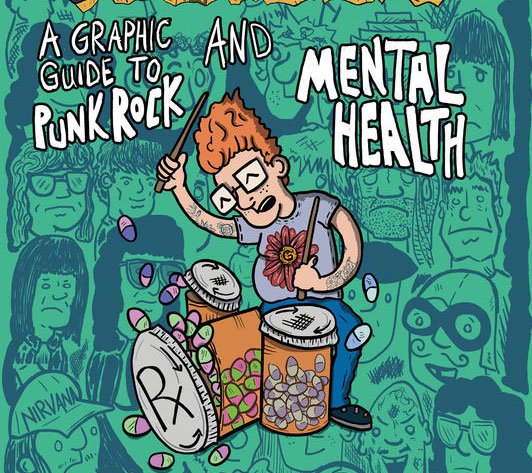
Musician, hard-core and metal enthusiast Reid Chancellor initially conceived Hardcore Anxiety as a book about the venues and artists that changed his life. Reid then found he could do so much more with this book by discussing the roots and history of mental health in hard-core and metal music. Chancellor also discusses his own mental health, his time in bands, making records and opening for Grammy-winning artists. Whilst Reid’s accomplishments are many and impressive; he struggled for a long time to find “what he was looking for”.
Throughout Hardcore Anxiety, Chancellor discusses the following bands: The Ramones, Black Flag, Circle Jerks, The Clash, The Bad Brains, S.O.L., The Kinks, Green Day, The Replacements, Fugazi, Jawbreaker, Life of Agony, Minor Threat and Hüsker Dü. Each band is cited as having a pivotal role in bringing, what the author would describe as the once almost unrecognised, let alone taboo Our author says these bands said that people do have mental health challenges and that mental health is not something that should be ignored or dismissed. Chancellor himself makes a pledge to readers in the epilogue to be more public about his own mental health.
Chancellor explains that as a young adolescent he initially thought that local bands at local venues had glamorous lives. This illusion was brutally shattered when he started his first band. Reid comically illustrates the challenges of trying to turn a profit from gigs and band merchandise. Band meetings were always held in less than glamorous locations: gig venue toilets. Whilst the author understandably took exception to the location of band meeting; the location of punk for Reid is irrelevant as punk is “inside us”. For Reid, his first gateway music to punk was through The Clash. Reid’s study of punk comes into play here noting that The Clash were actually the antithesis of many punk bands because The Clash “was fairly focused”. Reid compares himself to Joe Strummer (The Clash) as they both don’t have “punk-rock” voices. Therefore Chancellor learned you don’t need to sound punk to be punk.
Reid’s first band was called “Scandalmongers”. He played wearing his glasses. Reid was also diagnosed with Type one diabetes. Chancellor felt uneasy needing to medicate just to feel “normal”. After all, Black Flag swore they would never be normal. Therefore Chancellor found solace in hard-core shows where no one is normal. Despite this and trying to live by the local venue “church” code: “Do what you love and never SELL OUT”; Reid increasingly felt like an imposter in the punk world. He feared that he was going to be cast out for not being cool enough. In an attempt to be more punk, Reid joined more bands including “One Step” and made sure he paid his dues in the mosh pit. Chancellor recalled being kicked in the head twice when he saw “Trapped under Ice” – his first big hard-core show. No amount of tattoos, cool shirts or patches on his camo vest alleviated his anxiety.
Reid opens up about his internal pressure to be the person he was on stage in all aspects of his life. He also recollects how he coped with low attendance at gigs. His first out of town gig with “Once Step” in Kentucky was a disappointment. With just ten minutes to go before their slot, only three people had turned up. Despite playing with the same enthusiasm as if it was a full house; the author did not enjoy these shows, and post-show, drowned his sorrows in pizza. Reid discusses his self-harming. The epiphany moment came to our punk author was that he realised he was trying too hard to be “all punk” instead of just being himself. After all, Reid is a Creed fan too. For Reid, change is not only something one needs to cope with, but it’s also “Okay”. This was something he learned from Fugazi – “the only band (according to Joe Strummer) that exemplified punk’s spirit”.
Whilst punk is evidently an integral part of Reid’s life, he remains objective about punk – it is “both freeing and entrapping”. For our author, thorough a plethora of punk and hard-core, it opened the door of mental health awareness to him. Through his honesty and seeking help, Chancellor says he now feels more comfortable with the way he views himself. As well as giving an open and fascinating insight into his own life experience through punk and hard-core; throughout Hardcore Anxiety, Reid eloquently and briefly summarises the fascinating wider impact of punk and hard-core – especially on mental health.
HARDCORE ANXIETY: A GRAPHIC GUIDE TO PUNK ROCK AND MENTAL HEALTH can be purchased via https://microcosmpublishing.com/catalog/books/9814


Be the first to comment